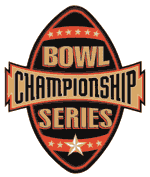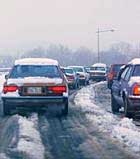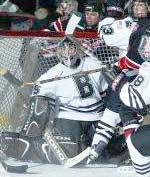Once again I’ll use football to make a hockey point.
Have you followed the BCS controversy? USC is No. 1 in both major college football polls, but because of their computer rankings, falls below the top two spots in the BCS standings and therefore will not play in the national championship game. However, because the AP Poll winner will also be recognized as a national champion — if USC wins the Rose Bowl over Michigan there will be a split national champion, something college football was trying to prevent with the institution of the BCS.
What a mess.

The problem is, people are up in arms about the wrong thing. The fact that USC is No. 1 in both polls is not a good reason for saying they are being “screwed.” Why are the polls correct and the computers wrong? We don’t know which one is right and which one is wrong. Both systems are flawed.
The BCS Standings are derived from an amalgam of the two polls, and seven different computer rankings. Having polls involved in the rankings is ridiculuos to begin with, if you really want to make it scientific. Pollsters are influenced by trends and what happened lately. Or maybe that’s a good thing. A mathematical algorithm takes the season as a whole. But if you wanted to build in a “late-season quotient” into the mathematical rankings, you could.
Unfortunately, you have seven different computer rankings doing seven different things, and none of the methods are made public. This leads to the type of thing I heard this weekend, where a radio commentator was recommending that, in order to avoid USC getting shut out of the title game, the NCAA should “fudge the computer.” He suggested that, since the methodology isn’t public, no one would know the difference.
Therein lies the whole reason why these things should remain public. I don’t believe the NCAA would do that — but just the fact that many people think they would, or should, is reason enough to keep the process transparent. Unfortunately, with two “tweaks” in the past two years to the RPI calculation, college hockey has decided not to do that. And that’s a shame in and of itself — never mind that most of us believe that college hockey should be using a better computation than RPI anyway.
Meanwhile, once again applying KRACH’s methodology to college football, we see that USC ranks seventh. It is not even close, and has nothing to be complaining about. Their strength of schedule is far inferior to the other Top 10 teams, and the only Top 20 team that’s worse is Utah. (KRACH, for the unitiated, is a statistical model that does a far superior job of determining relative strength of schedule than any other system — without needing to resort to tweaks and tricks. Further explanation)
Pollsters in college football have been too easily fooled by the appearance of a strong schedule by USC, since they played many traditional powers who had poor years. It also ended the season with some strong wins. All of which again points out why no one should be up in arms about USC — and why it remains completely ludicrous not to have a playoff system in college football.
Driving
Every year, myself and numerous other college hockey folks make all sorts of treks through the highways of North America in our quest to watch hockey. For me, this mostly means the Northeast, with an occasional jaunt to Milwaukee, Columbus, St. Paul or Florida. Lots and lots of driving. This makes for a lot of bad fast-food meals, a lot of caffeine, and familiarity with every interstate rest stop East of the Mississippi. I drive at night a lot. I like it. Just me and the truckers. For the most part, these are the best and most courteous drivers on the road. They know the rules of the road. Too bad the same can’t be said for the rest of the world.
Here are some of my biggest driving pet peeves:

Some of the best things:
Now we turn serious. Unfortunately, sometimes all of this winter driving is no laughing matter. Hockey fans, media, parents and coaches probably drive in more miserable conditions, more often, than that of any other sport. This year, that reality affected the college hockey community when Colorado College assistant Norm Bazin got into a terrible accident in Spokane, Wash., while coming back from a recruiting trip. He was driving through a bad snowstorm. He is still in serious condition.
As we all started to get wind of this, a lot of us thought the same thing: We’re amazed this doesn’t happen more often. Just this past week, a major storm hit the Northeast. Friday, I had to drive 85 miles from my home in suburban Philadelphia to CSTV’s studios in Manhatten. It normally takes 90 minutes. It took me 5 hours. While getting onto the New Jersey Turnpike, my car did a 180 on the on-ramp. A bus was approaching from behind, but luckily was far enough back to stop. I then drove back to Philadelphia, then onto Ithaca for the Cornell-Harvard game the next morning (another 5 hours in bad weather), and then back to Philadelphia on Sunday morning. No further incidents, thankfully.
Last year, a similar thing happened. I was driving from Dartmouth (Hanover, N.H.) to Albany, N.Y. in a blinding blizzard. I left Hanover at 11 p.m. The usual three-hour drive took six, going 40 miles per hour, at most, the whole way. When I neared Albany and got to the New York Thruway, the conditions looked better so I tried going 45 mph. I wound up doing another 180 and skidding across the NY Thruway. This incredible calm came over me as I watched cars approach me. I figured, OK, I’m gonna get smacked, but I have my seatbelt on, and I have insurance and a cell phone. Again, luckily, everyone was far enough back and going slow enough to miss me.
Driving in these kinds of conditions is bound to happen at least a few times a season. I don’t know what else to say about that except, let’s all please be careful.
Musings
• Last time, I talked about my proposal to widen the nets six inches in order to bring scoring back to the game. I was talking more about the NHL than college, and my premise is simply that goaltenders are so much better than they used to be, and that’s not going to change; and when you have an irreversible condition, you need to do something else to compensate.
I got some responses from some … concerned … goaltenders. Kurt Brown, a former Colgate goalie, suggested that the goaltender’s equipment is so much lighter, no wonder today’s players are more agile. I agree that’s true, but I don’t think that’s all the difference. I think it’s clear the players today are also just more athletic. He also recommends limiting the use of high-tech sticks — but we’re trying to increase offense here. … Stephen Stamp suggested that perhaps a trapezoid could be used to widen the net at the bottom, but leave it the same width at top. This would offset the now universal butterfly style of goalies. Sounds like an interesting idea.

• It’s easy for some outsiders to dismiss Brown’s good start because of the ECAC-only schedule. But Brown did look mighty impressive, and Yann Danis’ 0.75 goals against average was nothing to sneeze at, I don’t care who they were playing against. But then Brown came to Central New York, and suddenly things took a turn for the worse — blowing a 3-1 lead to tie Cornell, then getting swamped, 6-1, at Colgate. It was like bad deja vu for the Bears. Last year, Brown was hot early, came to central New York, and got stomped on, getting outscored 8-0 in two games. It took them a while to fully recover. This year’s team seems better prepared to handle this blip. We’ll see.
• I had a college hockey sighting while watching the movie “About Schmidt” with Jack Nicholson. There is a very brief scene of him watching a hockey game, and the game flashes by quickly. Through stop motion and deductive reasoning, I figured out that the game he’s watching is Nebraska-Omaha vs. Michigan in the 2000 CCHA tournament semifinals, and the play is James Chalmers scoring a goal for the Mavericks. Which I guess makes sense given that the movie takes place mainly in Omaha.
I can think of two other college hockey sightings, one in “Grumpy Old Men” and another in “Fargo.” In both cases, I think they are watching Gophers games. If I’m not mistaken, in one of them, the video is actually from the Harvard-Minnesota NCAA title game in 1989. I have the Fargo DVD, but am too lazy to check right now. … Of course, we also know that they are playing a Harvard-Cornell game in the infamous “Love Story,” featuring our own Joe Bertagna in goal. But any other college hockey sightings you can think of? Let me know.
• Michigan and Michigan State waged another couple of battles in their neverending war this past weekend, and both games were decided by identical 2-0 scores, with each team taking a game. I watched Friday’s game, and it seemed rather lackluster to me, though obviously Eric Nystrom’s late goal was dramatic. Michigan State returned the favor a night later. … Michigan State is still having trouble scoring goals — four in the last four games, including three losses — but they have to be excited about the play of freshman goaltender Dominic Vicari, who played both games.
More interesting right now, however, is whether the stranglehold these two schools have on the CCHA is showing signs of disappearing. The Wolverines and Spartans have combined for the last eight CCHA tournament championships. Until last season, with Ferris State coming in first place, the two teams had combined to win both the regular-season and tournament title for six straight years. Not since 1992-93 has neither team won either title. … This year, neither school is even in the top three in the standings. Of course, we all know this can change fast, and Michigan certainly has it in them to bust loose to the top of the pack. But moreso than in a long time, there are a number of teams with legitimate chances to unseat the two top dogs.
• What is wrong with Boston University? I don’t know exactly, but I think this year’s team has gotten beyond the point of chalking it up to a bad start. I don’t see how the Terriers will recover from this. Somehow, some way, they always seem to find a way to be peaking right around Beanpot time, but at this rate, they may not have enough in the tank for a late run to the NCAAs.
Sure, it’s possible that Sean Fields will start to play better. And I’m sure Frantisek Skladany will finally get a few goals. But when I look at BU, I see a team with a lot of hard-working pluggers, and not really any scorers. And so the defense is taking chances in the play, and then it hurts them in their own end. I couldn’t tell you where this all went wrong — it’s a team with a lot of guys who were highly-touted coming into school. And it’s not like these guys are all just lousy. But they are just missing some key components. And given the nature of the rest of Hockey East, I don’t see how the Terriers can dig out of this hole and place any higher than fourth or fifth.
• I really didn’t expect Vermont to be winless at this point. Although I’d have personally done what I could to get Jeff Jackson to Burlington, there was plenty of positives about the change in coaches from Mike Gilligan to Kevin Sneddon. And I felt as though Gilligan left Sneddon with a decent amount of talent to work with. Jeff Miles is an NHL Draft pick that showed a lot of skill last year, and Jamie Sifers is a very talented defenseman, with a chance to be one of the league’s best real soon. Vermont also has a very good goalie in Travis Russell, even though he’s often facing a lot of rubber.
So, the Catamounts being winless is fairly shocking to me. But then this week comes word that Miles decided to relinquish his captaincy. In making the annoucement, Sneddon said, “Jeff came to the coaching staff and said that he felt it would be best for the team and best for him if he was no longer a captain. We respect his decision …” It’s a strange move, and you wonder if there’s anything to infer between the lines, or if it was a simple case of frustration. But here’s to hoping that ship can be steered back in the right direction soon.
• Someone needs to start giving credit where credit is due. Scott Owens is clearly doing one helluva job at Colorado College. Once again, the Tigers lost a lot of talent, including the Hobey winner Peter Sejna, and the next two top scorers in Tom Preissing and Noah Clarke. The trio combined for 202 points last season. Meanwhile, Brett Sterling, who had 27 goals as a freshman last year, has been limited to just eight games and has five goals. So, along comes “finds,” sophomores Joey Crabb and Aaron Slattengren, putting up numbers and filling some of the holes. But mostly, Owens has done it by re-emphasizing defense, and shown he can coach a team with high-point guys, and a team where goals are harder to come by. Then goalie Curtis McElhinney goes down with mono, and freshman Matt Zaba comes in and puts up better numbers. Lights out numbers. Like 5-1-2 with a 1.35 goals against average so far.
Miami is another team that has slipped under the radar of a lot of people. They haven’t played the greatest of schedules, and got off to a poor start with losses to St. Lawrence and Air Force (although with a big win over Michigan as well). But the RedHawks have since come back strong, sweeping Ohio State to move into first in the CCHA. And they boast the nation’s leading scorer in Derek Edwardson. How many people knew that?


